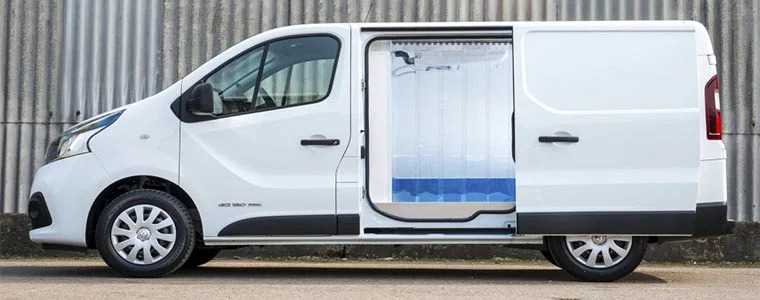We understand that for some of our customers – especially those just starting their own business – the refrigerated van industry might not be the most intuitive subject to come to terms with. That’s why in the coming weeks, we’ll be using this space to publish a buyer’s guide, explaining everything you need to know in as much detail as we can.
We’ll be going into these extensive details in the coming weeks, but firstly we think it’s best to give you a quick overview of the sorts of considerations you might have when looking at a refrigerated van – and what’s more, how we can meet those requirements here at CoolKit.
Here are some of the main things you’ll want to think about when looking at a refrigerated van:
- What temperature do I need for my refrigerated van?
- What will my refrigerated vehicle cargo be?
- What sort of payload will I need?
- How many drops or deliveries will I regularly make?
- How long will my refrigerated doors be open for?
- What wheelbase do I need for my refrigerated vehicle?
- Any other extra specifications for my refrigerated vehicle?
- How urgently do I need the van?
So without further ado, let’s take a quick look at each one.
What temperature will you require?

When talking about refrigerated vans, it’s not hard to see why this is one of the first questions you should be asking. We prominently display this information on all of our product pages, so you can see it at a glance. Obviously, it will often depend on the van’s contents – which leads us right onto…
What will your refrigerated van be carrying?

Closely related to the temperature you’ll require, this is again one of the foremost considerations you’ll need to have in mind when picking out your refrigerated van. We don’t set any of our individual vans to suit any particular market sector, so if you run a flower business, for example, there can be any number of vehicles amongst our stock that could suit your company.
What vehicle payload will you need?

This is a major focus of ours here at CoolKit, and it’s just one of the ways we stay on top of the industry. We’re constantly working towards improving the payload capability of our refrigerated vans, improving their economy by maximising the load you can carry in a single journey.
How many drops will you be making? (and) how long will the doors be open for?

These are both equally important questions, and among the factors they’ll govern is the required power of the refrigeration unit, and whether or not you’ll need strip curtains. Some customers may even find it beneficial to use CurtAir, our own high-tech solution. Once again, it all comes down to your needs and those of your business.
What wheelbase will you need?

Particularly important to customers who intend to use pallets to transport their goods, wheelbase affects the depth of the loadspace available. The options available are LWB, MWB and SWB; long wheel base, medium wheel base and short wheel base respectively. These measurements aren’t uniform across the brands – the LWB on a Ford model could differ from the LWB on a Peugeot, for example, so in a later blog we’ll go into more depth about the exact measurements for each various brand.
Will you require any additional specifications or features?

These might include (but are not limited to) a slip resistant floor, a wet load floor, or any extra shelving and racking. Again, we’ll go into full details on the list of extra features in a later blog. If you do have any of these bespoke requirements, we’d generally recommend going with a new van so we can implement these specifications from the ground up, and you can be certain that the van won’t fall short in any areas in which you need it to perform.
Having said that, though, there may well be used vans amongst our stock that could fulfil your needs just as effectively. It’s always worth a quick look first, just in case.
How urgently will you need the van?

If you have a pressing need for a chiller vehicle or freezer van at the earliest possible moment, again it’s worth checking our used vans first, as we can have these ready and on the road faster. In some cases, if we have the van converted already, it might even be a matter of just a couple of days. Newer vans, however, will take at least a few weeks, and if you have complex requirements they’ll obviously take even longer.
For some of our customers this can be a balancing act, but we tend to find that for many, it’s a relatively simple decision to choose between bespoke options versus speed of deployment. To reiterate that same point once again, it all depends on the business.
There’s universally good news on one final point; mileage is generally never an issue, as we always make sure we buy in our used vans at a decent level, and naturally it’s not a consideration with the newest vans.
We hope this blog has gone some way to giving you a good overview of what you need to have in mind when purchasing a refrigerated vehicle! However, at CoolKit we’re always happy to explain anything further for you, or answer any questions you may have.

